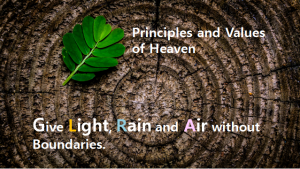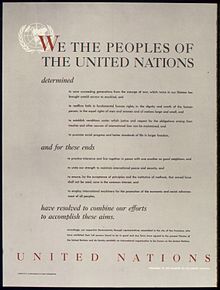2019 World Peace Summit: 5th Anniversary of the WARP Summit
Summit Teaser from HWPL on Vimeo.
- Background
In this current century, the UN’s sustainable development goals (SDGs) set out key points for harmonious coexistence and development of the global community, including the economy, poverty eradication, education, welfare, equality and justice. The precondition for achieving this goal is the sustainable state of peace without war based on the complete cessation of violent conflicts such as hostile actions and wars throughout the international community.
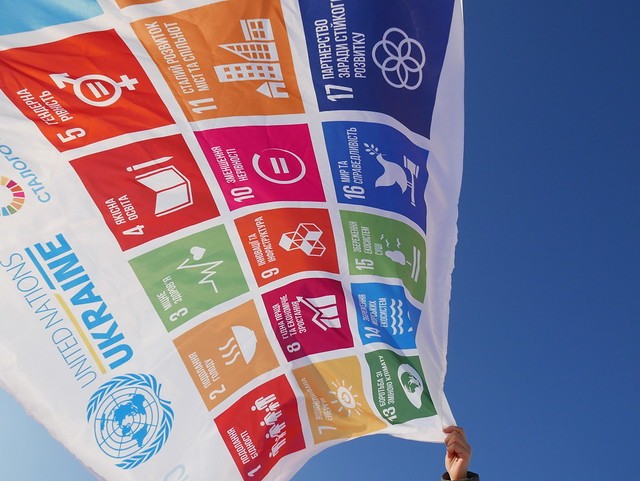
However, conflicts and actions of war between countries have not ceased, and the possibility of war is further increased by the spread of violent extremism by non-state actors based on religious and ethnic identity. Just as such, today’s conflicts are becoming worsened by the everyday fears that can directly affect individuals, going beyond what affects one’s country.
Therefore, a comprehensive approach of prevention and solution is required to respond to violent forms of disputes, including wars that threaten the lives of mankind. This comprehensive approach is based on the participation of non-governmental organizations and individuals – as well as governments and intergovernmental organizations (IGOs) in this current international community – where the response to disputes in non-political areas such as culture, religion, ethnicity, economy, and the environment is required with the cooperation between various actors. This increases the possibility of establishing global peace as a new approach to respond to conflicts by transcending national boundaries with shared, common effort for peace from around the world.
The HWPL Peace Summit sets the source of power to create a world of peace to include every agent of action – from an individual to a country – to become a peace messenger. The 10 articles and 38 clauses of the Declaration of Peace and Cessation of War (DPCW), drafted by HWPL along with international law experts from around the world, reconfirms the core values included in the existing international documents discussed and drawn in international communities including the UN Charter and the Universal Declaration of Human Rights (UDHR).
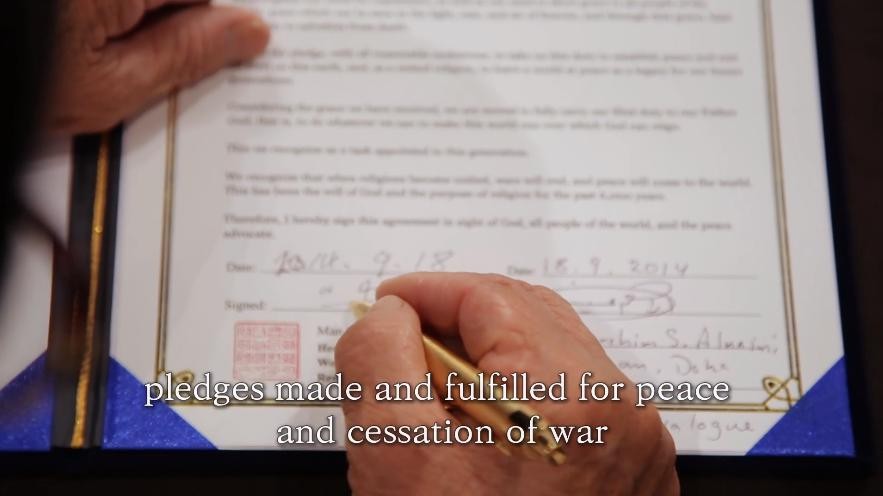
The Declaration also clarifies the role of the members of international society, including civil societies and countries, to ban, prevent, and resolve conflicts. Based on the global support shown through “Legislate Peace” campaign, the 10 articles and 38 clauses of the DPCW should be introduced to the UN as a resolution with the goal of the principles of peace represented in the Declaration should be established as international law for peace which should be protected as a legally binding document in the world today.
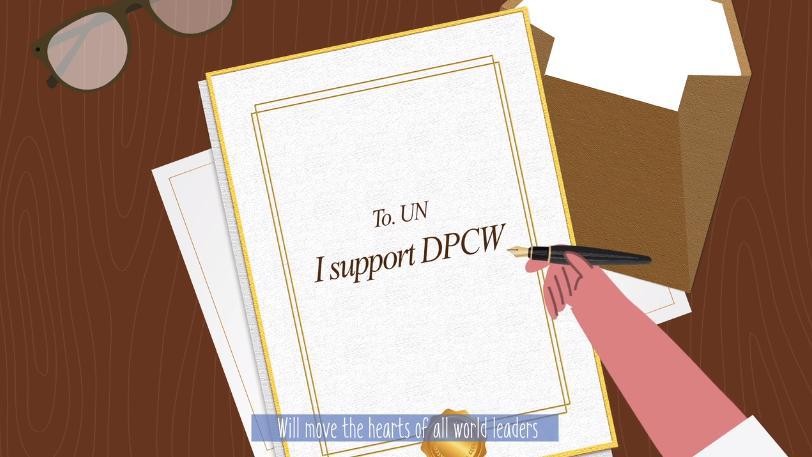
- HOST AND PARTNER ORGANIZATIONS
HWPL, the host of this event, is an NGO associated with the Seoul Metropolitan Government and the UN Department of Global Communications and in Special Consultative Status with the UN ECOSOC. The organizers are the IPYG, an affiliated organization of HWPL, and the IWPG, a UN ECOSOC-affiliated NGO with Special Consultative Status. Mr. Man Hee Lee is the chairman of HWPL. In fact, everything here has nothing to do without him. That’s how important he is.
All of these can be seen as Man Hee Lee’s peace biography. I think it would be nice to read another article because I’ve posted so many posts about who he is. (more info)
Official: http://www.hwpl.kr/en/
WARP Summit History (2014~2018)
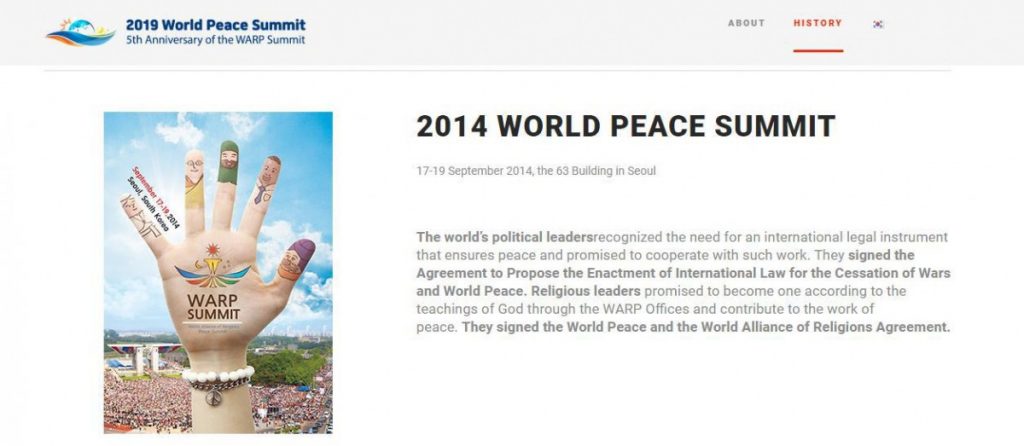
1. On 17-19 September 2014, HWPL hosted the September 18th HWPL World Peace Summit for world peace and cessation of war. At this event, the world’s political leaders recognized the need for an international legal instrument that ensures peace and promised to cooperate, and religious leaders promised to become one according to the teachings of God and contribute to peace. As a token of their promise, they signed the Agreement to Propose the Enactment of International Law for the Cessation of Wars and World Peace and the World Alliance of Religions Agreement on 18 September 2014 at the 63 Building in Seoul.
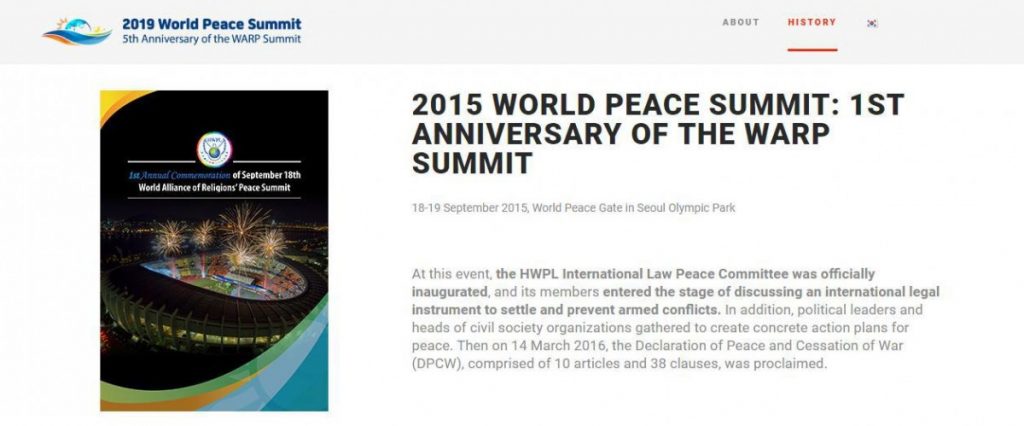
2. In 2015, the 1st anniversary of the September 18th HWPL World Peace Summit was held at the World Peace Gate in Seoul Olympic Park. At this event, the HWPL International Law Peace Committee was officially inaugurated, and its members entered the stage of discussing an international legal instrument to settle and prevent armed conflicts.
Then on 14 March 2016, the Declaration of Peace and Cessation of War (DPCW), comprising of 10 articles and 38 clauses, was proclaimed. The fundamental spirit of the DPCW is the fair governance based on law, not power. Articles 1 to 7 pertain to the role of States while Articles 8 to 10 aim to empower the participation of global citizens in establishing a global order of peace through politics, religion, media, education, and civil society.
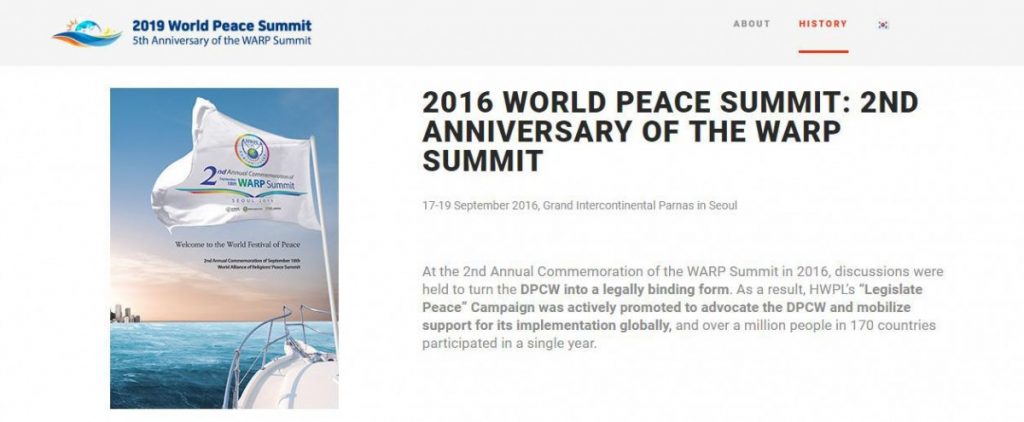
3. At the 2nd Anniversary of the September 18th HWPL World Peace Summit of 2016, discussions were held to turn the DPCW into legally binding form. As a result, “Legislate Peace” Project was launched to advocate the DPCW and mobilize support for its implementation globally, and over a million people in 170 countries participated in just one year.
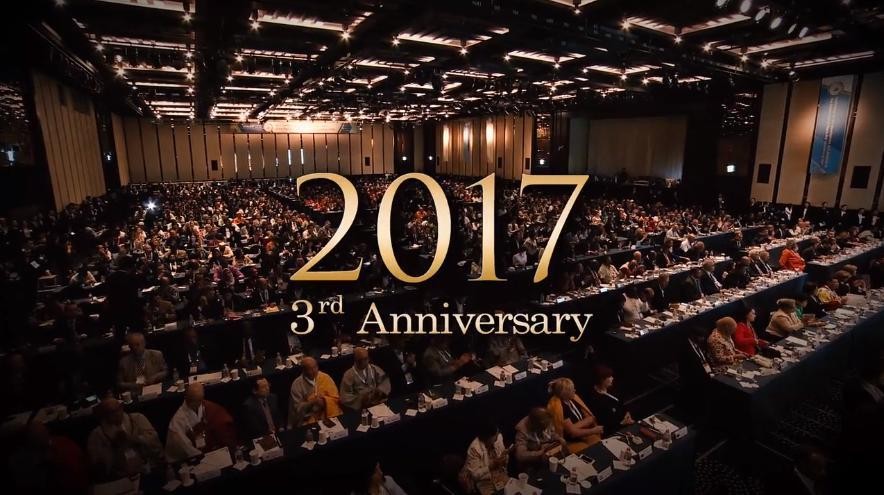
4. In 2017, 2017 Anniversary of the September 18th HWPL World Peace Summit was held under the theme, “Establishing Collaborative Governance for Development and Implementation of the DPCW.” Building on the momentum from the adoption of the DPCW by the Central American Parliament (PARLACEN), the Summit aimed to increase awareness of the DPCW among intergovernmental organizations including the United Nations.
Furthermore, the agreed standards for determining a trustworthy religious scripture, which is the key of the comparative study of scriptures, were presented and ideas for a global peace media network were developed. Overall, the Summit provided an opportunity to seek ways to establish a cooperative network among international organizations, governments, and civil societies.
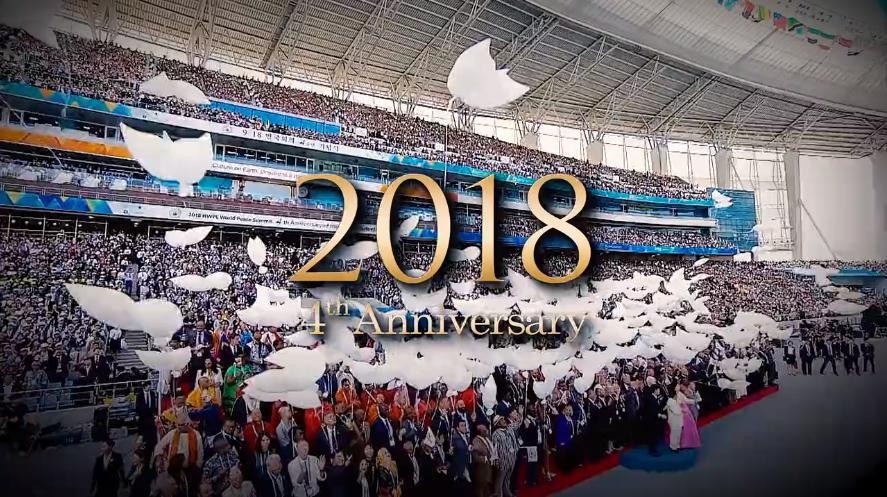
5. Through the 4th Anniversary of the September 18th HWPL World Peace Summit that convened with the theme of Collaboration for Peace Development: Building a Peace Community through the DPCW in 2018, the following topics were discussed: 1) Plans of action to support the DPCW to be introduced as UN resolution as a national and regional level; 2) Plans of action to establish and expand peace networks with various fields in the core including politics, religion, education, media, youth, women, etc.
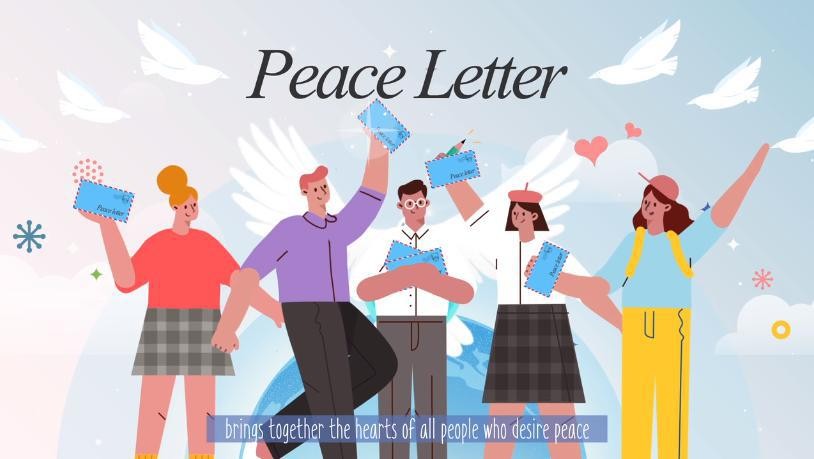
With the youths’ Peace Letter activities that urged for a peaceful unification on the Korean Peninsula in 2018, the Peace Letter campaign expanded during March to May in 2019 for the citizens and leaders from around the world in various sectors to urge support for the DPCW. As a result of this campaign, peace letters were written and sent to the heads of state from 192 countries.
Come with us! Let’s meet!
The theme of the 2019 World Peace Summit: 5th Anniversary of the WARP Summit is “Legislate Peace”– Implementation of the DPCW for Sustainable Development. This year the outcomes from the previous year’s work – in which various fields focused on solidifying peace networks – will be shared, along with a more detailed direction for the advancement of actualizing world peace. For this purpose, there will be events held in 200 cities in 110 countries with 300,000 citizens with the goal of establishing a universal order and standard that is applicable internationally, and to establish an international, legally binding document for peace.
WARP Summit: http://bit.ly/2Zi1BDQ
HWPL: http://www.hwpl.kr/en/
Sign your support for DPCW: http://bit.ly/30lrUdI
Online Peace Letter: http://bit.ly/2P2ZgNj
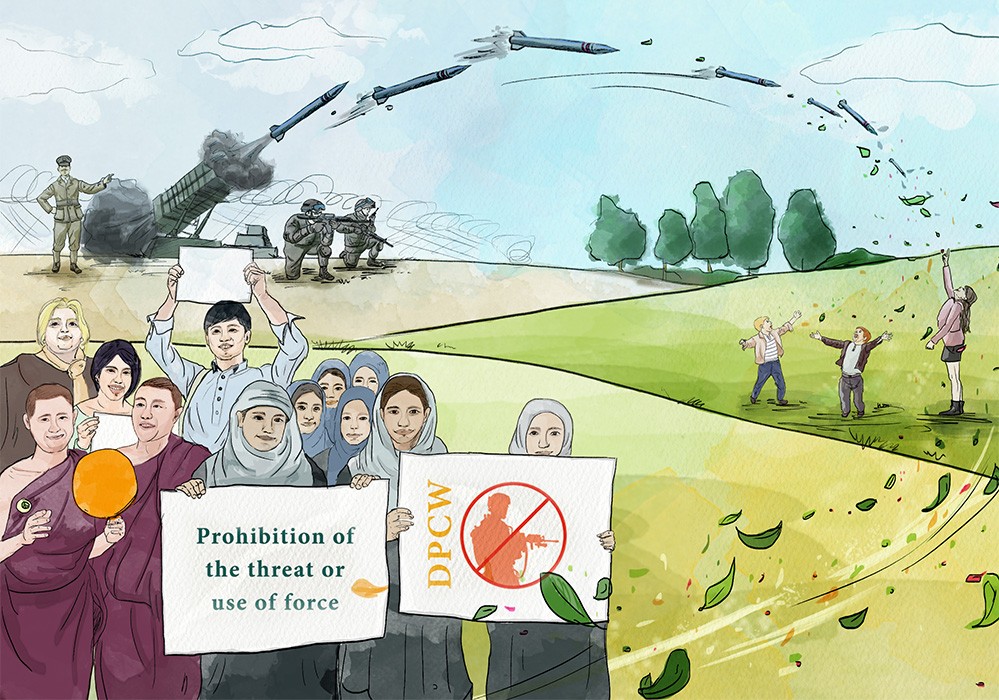
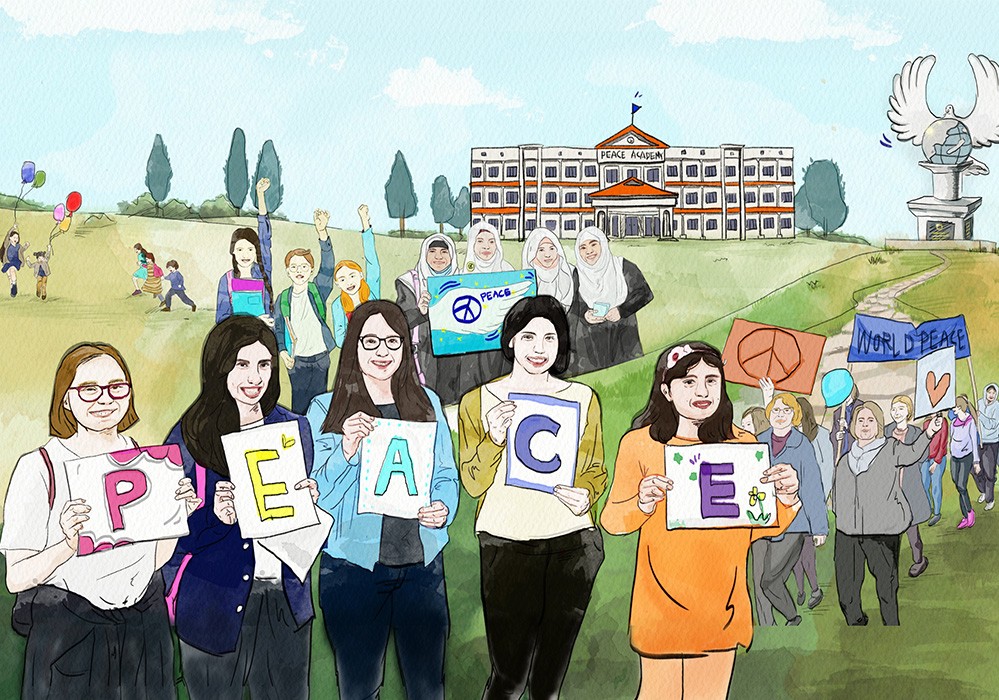
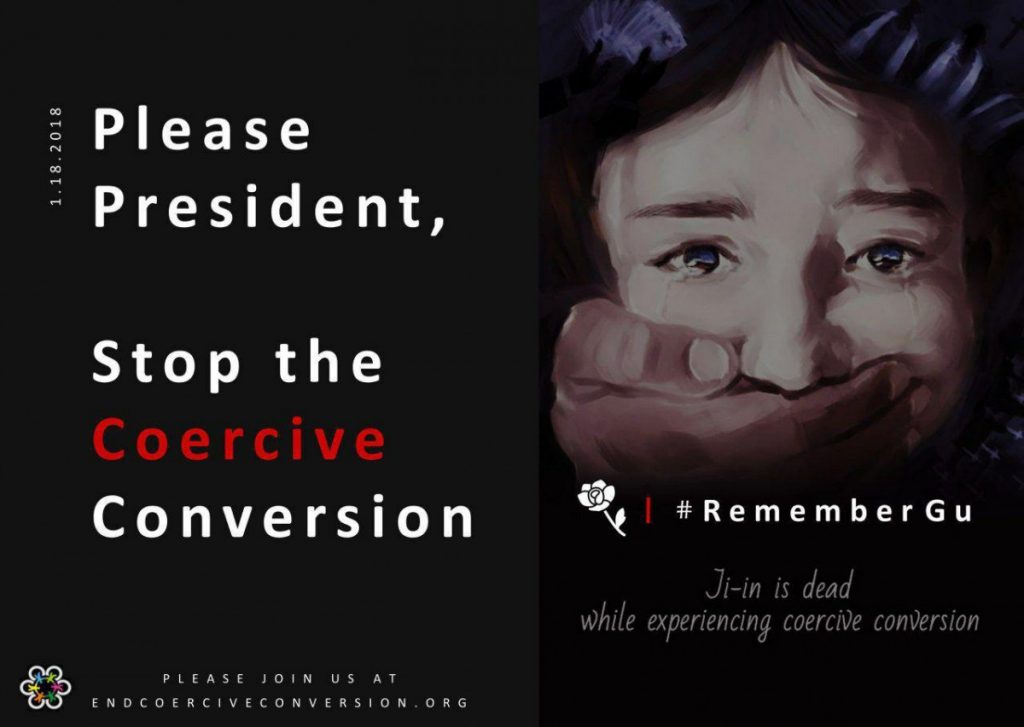
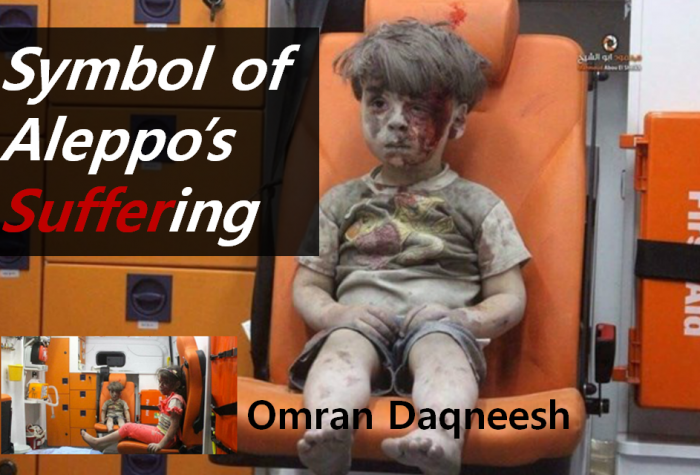
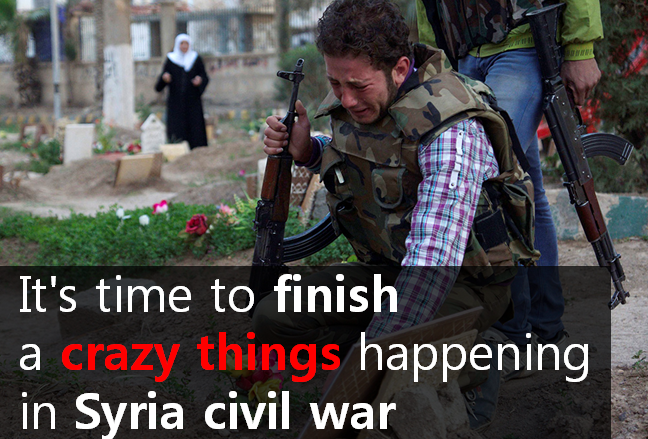
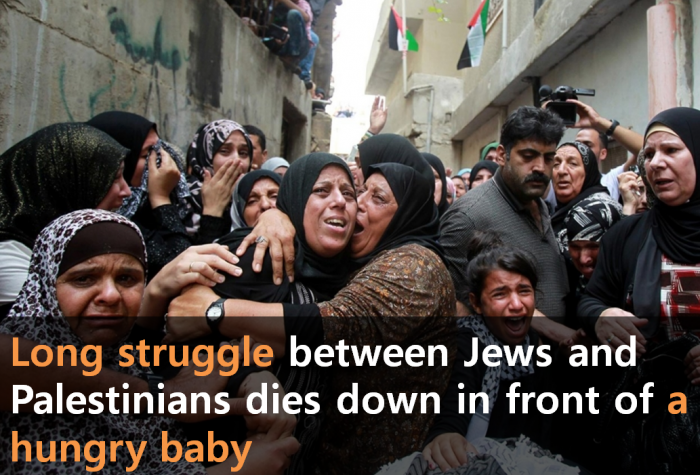
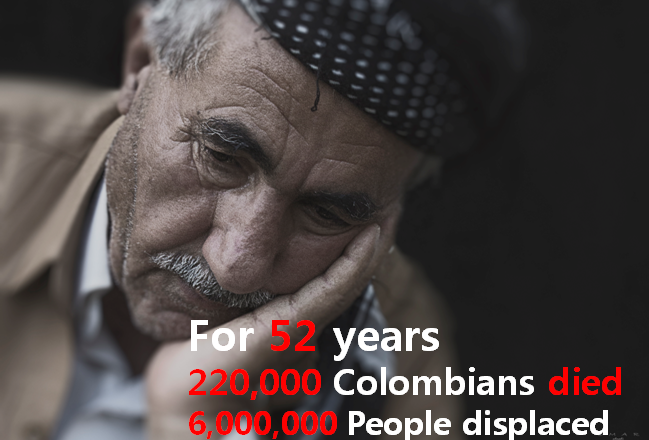
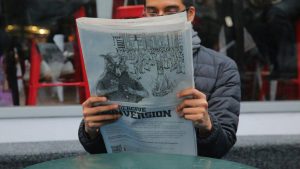
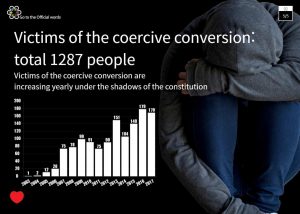 Even in Korea, the country of Kpop, where religious freedom was stipulated in the Constitution, violations of religious freedom are taking place. The reason why Ms. Ji-in Gu had to die of suffocation is ‘
Even in Korea, the country of Kpop, where religious freedom was stipulated in the Constitution, violations of religious freedom are taking place. The reason why Ms. Ji-in Gu had to die of suffocation is ‘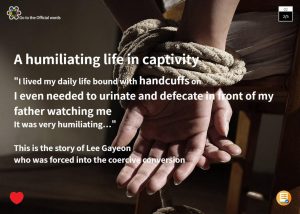
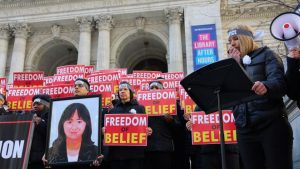 The Unanswered Government and the President, the Coercive Conversion Pastors who cleverly shirk their legal responsibilities.
The Unanswered Government and the President, the Coercive Conversion Pastors who cleverly shirk their legal responsibilities.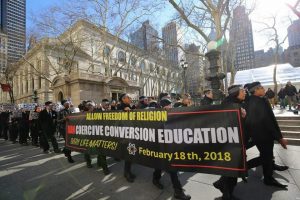
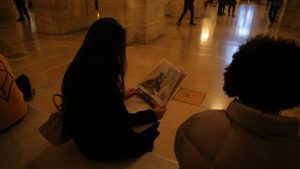
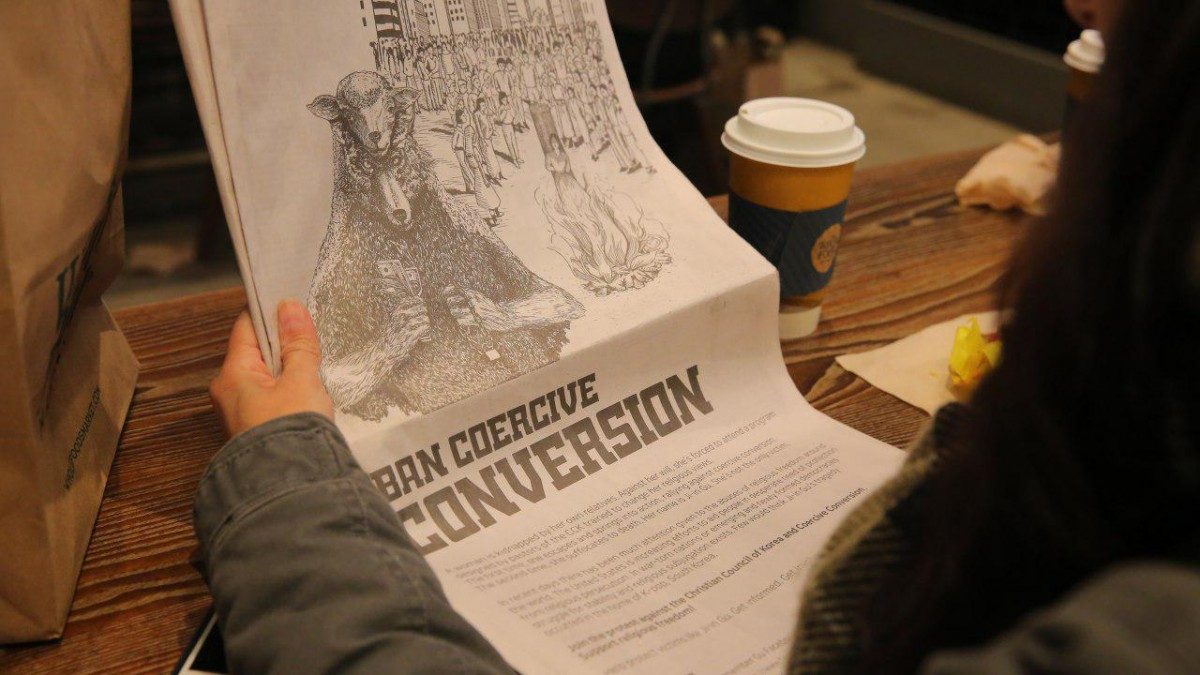

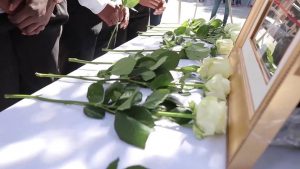
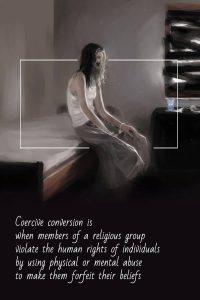
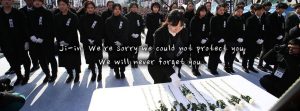
![A STEP TOWARDS PEACE WorldPeace United Nations General Assembly United Nations UNGA UN Charter UDHR The Right to Peace - The Universal Declaration of Human Rights at 70 The Right to Peace Sustainable Development Goal 16 standup4humanright Secretary-General António Guterres SDGs peaceday New York Man Hee Lee International Day of Peace HWPL Chairman Man Hee Lee António Guterres 918WARPSummit A STEP TOWARDS PEACE [D-1] International Day of Peace: DPCW is Right to Peace WorldPeace United Nations General Assembly United Nations UNGA UN Charter UDHR The Right to Peace - The Universal Declaration of Human Rights at 70 The Right to Peace Sustainable Development Goal 16 standup4humanright Secretary-General António Guterres SDGs peaceday New York Man Hee Lee International Day of Peace HWPL Chairman Man Hee Lee António Guterres 918WARPSummit](https://www.peacestep.com/wp-content/uploads/2018/09/0917_국제법_eng-1200x630.jpg)
![A STEP TOWARDS PEACE WorldPeace United Nations General Assembly United Nations UNGA UN Charter UDHR The Right to Peace - The Universal Declaration of Human Rights at 70 The Right to Peace Sustainable Development Goal 16 standup4humanright Secretary-General António Guterres SDGs peaceday New York Man Hee Lee International Day of Peace HWPL Chairman Man Hee Lee António Guterres 918WARPSummit A STEP TOWARDS PEACE [D-1] International Day of Peace: DPCW is Right to Peace WorldPeace United Nations General Assembly United Nations UNGA UN Charter UDHR The Right to Peace - The Universal Declaration of Human Rights at 70 The Right to Peace Sustainable Development Goal 16 standup4humanright Secretary-General António Guterres SDGs peaceday New York Man Hee Lee International Day of Peace HWPL Chairman Man Hee Lee António Guterres 918WARPSummit](http://www.peacestep.com/wp-content/uploads/2018/09/18-00030-Int-Day-of-Peace-Poster-3B-225x300.png)
![A STEP TOWARDS PEACE WorldPeace United Nations General Assembly United Nations UNGA UN Charter UDHR The Right to Peace - The Universal Declaration of Human Rights at 70 The Right to Peace Sustainable Development Goal 16 standup4humanright Secretary-General António Guterres SDGs peaceday New York Man Hee Lee International Day of Peace HWPL Chairman Man Hee Lee António Guterres 918WARPSummit A STEP TOWARDS PEACE [D-1] International Day of Peace: DPCW is Right to Peace WorldPeace United Nations General Assembly United Nations UNGA UN Charter UDHR The Right to Peace - The Universal Declaration of Human Rights at 70 The Right to Peace Sustainable Development Goal 16 standup4humanright Secretary-General António Guterres SDGs peaceday New York Man Hee Lee International Day of Peace HWPL Chairman Man Hee Lee António Guterres 918WARPSummit](http://www.peacestep.com/wp-content/uploads/2018/09/article2-03@2x-300x300.png)
![A STEP TOWARDS PEACE WorldPeace United Nations General Assembly United Nations UNGA UN Charter UDHR The Right to Peace - The Universal Declaration of Human Rights at 70 The Right to Peace Sustainable Development Goal 16 standup4humanright Secretary-General António Guterres SDGs peaceday New York Man Hee Lee International Day of Peace HWPL Chairman Man Hee Lee António Guterres 918WARPSummit A STEP TOWARDS PEACE [D-1] International Day of Peace: DPCW is Right to Peace WorldPeace United Nations General Assembly United Nations UNGA UN Charter UDHR The Right to Peace - The Universal Declaration of Human Rights at 70 The Right to Peace Sustainable Development Goal 16 standup4humanright Secretary-General António Guterres SDGs peaceday New York Man Hee Lee International Day of Peace HWPL Chairman Man Hee Lee António Guterres 918WARPSummit](http://www.peacestep.com/wp-content/uploads/2018/07/Declaration-of-peace-and-cessation-of-war2-300x155.png) So far, international law has
So far, international law has![A STEP TOWARDS PEACE WorldPeace United Nations General Assembly United Nations UNGA UN Charter UDHR The Right to Peace - The Universal Declaration of Human Rights at 70 The Right to Peace Sustainable Development Goal 16 standup4humanright Secretary-General António Guterres SDGs peaceday New York Man Hee Lee International Day of Peace HWPL Chairman Man Hee Lee António Guterres 918WARPSummit A STEP TOWARDS PEACE [D-1] International Day of Peace: DPCW is Right to Peace WorldPeace United Nations General Assembly United Nations UNGA UN Charter UDHR The Right to Peace - The Universal Declaration of Human Rights at 70 The Right to Peace Sustainable Development Goal 16 standup4humanright Secretary-General António Guterres SDGs peaceday New York Man Hee Lee International Day of Peace HWPL Chairman Man Hee Lee António Guterres 918WARPSummit](http://www.peacestep.com/wp-content/uploads/2018/09/2018-918-HWPL-World-Peace-WARP-Summit2-300x169.jpg) Of the past 3,400 years, humans have been entirely at peace for 268 of them, or just
Of the past 3,400 years, humans have been entirely at peace for 268 of them, or just ![A STEP TOWARDS PEACE WorldPeace United Nations General Assembly United Nations UNGA UN Charter UDHR The Right to Peace - The Universal Declaration of Human Rights at 70 The Right to Peace Sustainable Development Goal 16 standup4humanright Secretary-General António Guterres SDGs peaceday New York Man Hee Lee International Day of Peace HWPL Chairman Man Hee Lee António Guterres 918WARPSummit A STEP TOWARDS PEACE [D-1] International Day of Peace: DPCW is Right to Peace WorldPeace United Nations General Assembly United Nations UNGA UN Charter UDHR The Right to Peace - The Universal Declaration of Human Rights at 70 The Right to Peace Sustainable Development Goal 16 standup4humanright Secretary-General António Guterres SDGs peaceday New York Man Hee Lee International Day of Peace HWPL Chairman Man Hee Lee António Guterres 918WARPSummit](http://www.peacestep.com/wp-content/uploads/2018/06/Intercultural-Dialogue-for-Peace-and-Development-at-UN-headquarters2-300x170.png)
![A STEP TOWARDS PEACE WorldPeace United Nations General Assembly United Nations UNGA UN Charter UDHR The Right to Peace - The Universal Declaration of Human Rights at 70 The Right to Peace Sustainable Development Goal 16 standup4humanright Secretary-General António Guterres SDGs peaceday New York Man Hee Lee International Day of Peace HWPL Chairman Man Hee Lee António Guterres 918WARPSummit A STEP TOWARDS PEACE [D-1] International Day of Peace: DPCW is Right to Peace WorldPeace United Nations General Assembly United Nations UNGA UN Charter UDHR The Right to Peace - The Universal Declaration of Human Rights at 70 The Right to Peace Sustainable Development Goal 16 standup4humanright Secretary-General António Guterres SDGs peaceday New York Man Hee Lee International Day of Peace HWPL Chairman Man Hee Lee António Guterres 918WARPSummit](http://www.peacestep.com/wp-content/uploads/2018/09/photo_2018-09-17_15-54-12-1-300x159.jpg)
![A STEP TOWARDS PEACE WorldPeace United Nations General Assembly United Nations UNGA UN Charter UDHR The Right to Peace - The Universal Declaration of Human Rights at 70 The Right to Peace Sustainable Development Goal 16 standup4humanright Secretary-General António Guterres SDGs peaceday New York Man Hee Lee International Day of Peace HWPL Chairman Man Hee Lee António Guterres 918WARPSummit A STEP TOWARDS PEACE [D-1] International Day of Peace: DPCW is Right to Peace WorldPeace United Nations General Assembly United Nations UNGA UN Charter UDHR The Right to Peace - The Universal Declaration of Human Rights at 70 The Right to Peace Sustainable Development Goal 16 standup4humanright Secretary-General António Guterres SDGs peaceday New York Man Hee Lee International Day of Peace HWPL Chairman Man Hee Lee António Guterres 918WARPSummit](https://www.peacestep.com/wp-content/uploads/2018/09/photo_2018-09-15_09-34-40-455x455.jpg)
![A STEP TOWARDS PEACE WorldPeace United Nations General Assembly United Nations UNGA UN Charter UDHR The Right to Peace - The Universal Declaration of Human Rights at 70 The Right to Peace Sustainable Development Goal 16 standup4humanright Secretary-General António Guterres SDGs peaceday New York Man Hee Lee International Day of Peace HWPL Chairman Man Hee Lee António Guterres 918WARPSummit A STEP TOWARDS PEACE [D-1] International Day of Peace: DPCW is Right to Peace WorldPeace United Nations General Assembly United Nations UNGA UN Charter UDHR The Right to Peace - The Universal Declaration of Human Rights at 70 The Right to Peace Sustainable Development Goal 16 standup4humanright Secretary-General António Guterres SDGs peaceday New York Man Hee Lee International Day of Peace HWPL Chairman Man Hee Lee António Guterres 918WARPSummit](https://www.peacestep.com/wp-content/uploads/2018/09/photo_2018-09-15_09-34-43-455x455.jpg)
![A STEP TOWARDS PEACE WorldPeace United Nations General Assembly United Nations UNGA UN Charter UDHR The Right to Peace - The Universal Declaration of Human Rights at 70 The Right to Peace Sustainable Development Goal 16 standup4humanright Secretary-General António Guterres SDGs peaceday New York Man Hee Lee International Day of Peace HWPL Chairman Man Hee Lee António Guterres 918WARPSummit A STEP TOWARDS PEACE [D-1] International Day of Peace: DPCW is Right to Peace WorldPeace United Nations General Assembly United Nations UNGA UN Charter UDHR The Right to Peace - The Universal Declaration of Human Rights at 70 The Right to Peace Sustainable Development Goal 16 standup4humanright Secretary-General António Guterres SDGs peaceday New York Man Hee Lee International Day of Peace HWPL Chairman Man Hee Lee António Guterres 918WARPSummit](https://www.peacestep.com/wp-content/uploads/2018/09/photo_2018-09-15_09-35-11-455x455.jpg)
![A STEP TOWARDS PEACE WorldPeace United Nations General Assembly United Nations UNGA UN Charter UDHR The Right to Peace - The Universal Declaration of Human Rights at 70 The Right to Peace Sustainable Development Goal 16 standup4humanright Secretary-General António Guterres SDGs peaceday New York Man Hee Lee International Day of Peace HWPL Chairman Man Hee Lee António Guterres 918WARPSummit A STEP TOWARDS PEACE [D-1] International Day of Peace: DPCW is Right to Peace WorldPeace United Nations General Assembly United Nations UNGA UN Charter UDHR The Right to Peace - The Universal Declaration of Human Rights at 70 The Right to Peace Sustainable Development Goal 16 standup4humanright Secretary-General António Guterres SDGs peaceday New York Man Hee Lee International Day of Peace HWPL Chairman Man Hee Lee António Guterres 918WARPSummit](https://www.peacestep.com/wp-content/uploads/2018/09/photo_2018-09-15_09-35-00-455x455.jpg)
![A STEP TOWARDS PEACE WorldPeace United Nations General Assembly United Nations UNGA UN Charter UDHR The Right to Peace - The Universal Declaration of Human Rights at 70 The Right to Peace Sustainable Development Goal 16 standup4humanright Secretary-General António Guterres SDGs peaceday New York Man Hee Lee International Day of Peace HWPL Chairman Man Hee Lee António Guterres 918WARPSummit A STEP TOWARDS PEACE [D-1] International Day of Peace: DPCW is Right to Peace WorldPeace United Nations General Assembly United Nations UNGA UN Charter UDHR The Right to Peace - The Universal Declaration of Human Rights at 70 The Right to Peace Sustainable Development Goal 16 standup4humanright Secretary-General António Guterres SDGs peaceday New York Man Hee Lee International Day of Peace HWPL Chairman Man Hee Lee António Guterres 918WARPSummit](https://www.peacestep.com/wp-content/uploads/2018/09/photo_2018-09-15_09-35-10-455x455.jpg)
![A STEP TOWARDS PEACE WorldPeace United Nations General Assembly United Nations UNGA UN Charter UDHR The Right to Peace - The Universal Declaration of Human Rights at 70 The Right to Peace Sustainable Development Goal 16 standup4humanright Secretary-General António Guterres SDGs peaceday New York Man Hee Lee International Day of Peace HWPL Chairman Man Hee Lee António Guterres 918WARPSummit A STEP TOWARDS PEACE [D-1] International Day of Peace: DPCW is Right to Peace WorldPeace United Nations General Assembly United Nations UNGA UN Charter UDHR The Right to Peace - The Universal Declaration of Human Rights at 70 The Right to Peace Sustainable Development Goal 16 standup4humanright Secretary-General António Guterres SDGs peaceday New York Man Hee Lee International Day of Peace HWPL Chairman Man Hee Lee António Guterres 918WARPSummit](https://www.peacestep.com/wp-content/uploads/2018/09/photo_2018-09-15_09-35-13-455x455.jpg)
![A STEP TOWARDS PEACE WorldPeace United Nations General Assembly United Nations UNGA UN Charter UDHR The Right to Peace - The Universal Declaration of Human Rights at 70 The Right to Peace Sustainable Development Goal 16 standup4humanright Secretary-General António Guterres SDGs peaceday New York Man Hee Lee International Day of Peace HWPL Chairman Man Hee Lee António Guterres 918WARPSummit A STEP TOWARDS PEACE [D-1] International Day of Peace: DPCW is Right to Peace WorldPeace United Nations General Assembly United Nations UNGA UN Charter UDHR The Right to Peace - The Universal Declaration of Human Rights at 70 The Right to Peace Sustainable Development Goal 16 standup4humanright Secretary-General António Guterres SDGs peaceday New York Man Hee Lee International Day of Peace HWPL Chairman Man Hee Lee António Guterres 918WARPSummit](https://www.peacestep.com/wp-content/uploads/2018/09/photo_2018-09-15_09-35-22-455x455.jpg)
![A STEP TOWARDS PEACE WorldPeace United Nations General Assembly United Nations UNGA UN Charter UDHR The Right to Peace - The Universal Declaration of Human Rights at 70 The Right to Peace Sustainable Development Goal 16 standup4humanright Secretary-General António Guterres SDGs peaceday New York Man Hee Lee International Day of Peace HWPL Chairman Man Hee Lee António Guterres 918WARPSummit A STEP TOWARDS PEACE [D-1] International Day of Peace: DPCW is Right to Peace WorldPeace United Nations General Assembly United Nations UNGA UN Charter UDHR The Right to Peace - The Universal Declaration of Human Rights at 70 The Right to Peace Sustainable Development Goal 16 standup4humanright Secretary-General António Guterres SDGs peaceday New York Man Hee Lee International Day of Peace HWPL Chairman Man Hee Lee António Guterres 918WARPSummit](https://www.peacestep.com/wp-content/uploads/2018/09/photo_2018-09-15_09-35-20-455x455.jpg)
![A STEP TOWARDS PEACE WorldPeace United Nations General Assembly United Nations UNGA UN Charter UDHR The Right to Peace - The Universal Declaration of Human Rights at 70 The Right to Peace Sustainable Development Goal 16 standup4humanright Secretary-General António Guterres SDGs peaceday New York Man Hee Lee International Day of Peace HWPL Chairman Man Hee Lee António Guterres 918WARPSummit A STEP TOWARDS PEACE [D-1] International Day of Peace: DPCW is Right to Peace WorldPeace United Nations General Assembly United Nations UNGA UN Charter UDHR The Right to Peace - The Universal Declaration of Human Rights at 70 The Right to Peace Sustainable Development Goal 16 standup4humanright Secretary-General António Guterres SDGs peaceday New York Man Hee Lee International Day of Peace HWPL Chairman Man Hee Lee António Guterres 918WARPSummit](https://www.peacestep.com/wp-content/uploads/2018/09/photo_2018-09-15_09-35-18-455x455.jpg)
![A STEP TOWARDS PEACE WorldPeace United Nations General Assembly United Nations UNGA UN Charter UDHR The Right to Peace - The Universal Declaration of Human Rights at 70 The Right to Peace Sustainable Development Goal 16 standup4humanright Secretary-General António Guterres SDGs peaceday New York Man Hee Lee International Day of Peace HWPL Chairman Man Hee Lee António Guterres 918WARPSummit A STEP TOWARDS PEACE [D-1] International Day of Peace: DPCW is Right to Peace WorldPeace United Nations General Assembly United Nations UNGA UN Charter UDHR The Right to Peace - The Universal Declaration of Human Rights at 70 The Right to Peace Sustainable Development Goal 16 standup4humanright Secretary-General António Guterres SDGs peaceday New York Man Hee Lee International Day of Peace HWPL Chairman Man Hee Lee António Guterres 918WARPSummit](https://www.peacestep.com/wp-content/uploads/2018/09/photo_2018-09-15_09-35-25-455x455.jpg)
![A STEP TOWARDS PEACE WorldPeace United Nations General Assembly United Nations UNGA UN Charter UDHR The Right to Peace - The Universal Declaration of Human Rights at 70 The Right to Peace Sustainable Development Goal 16 standup4humanright Secretary-General António Guterres SDGs peaceday New York Man Hee Lee International Day of Peace HWPL Chairman Man Hee Lee António Guterres 918WARPSummit A STEP TOWARDS PEACE [D-1] International Day of Peace: DPCW is Right to Peace WorldPeace United Nations General Assembly United Nations UNGA UN Charter UDHR The Right to Peace - The Universal Declaration of Human Rights at 70 The Right to Peace Sustainable Development Goal 16 standup4humanright Secretary-General António Guterres SDGs peaceday New York Man Hee Lee International Day of Peace HWPL Chairman Man Hee Lee António Guterres 918WARPSummit](https://www.peacestep.com/wp-content/uploads/2018/09/photo_2018-09-15_09-35-57-455x455.jpg)
![A STEP TOWARDS PEACE WorldPeace United Nations General Assembly United Nations UNGA UN Charter UDHR The Right to Peace - The Universal Declaration of Human Rights at 70 The Right to Peace Sustainable Development Goal 16 standup4humanright Secretary-General António Guterres SDGs peaceday New York Man Hee Lee International Day of Peace HWPL Chairman Man Hee Lee António Guterres 918WARPSummit A STEP TOWARDS PEACE [D-1] International Day of Peace: DPCW is Right to Peace WorldPeace United Nations General Assembly United Nations UNGA UN Charter UDHR The Right to Peace - The Universal Declaration of Human Rights at 70 The Right to Peace Sustainable Development Goal 16 standup4humanright Secretary-General António Guterres SDGs peaceday New York Man Hee Lee International Day of Peace HWPL Chairman Man Hee Lee António Guterres 918WARPSummit](https://www.peacestep.com/wp-content/uploads/2018/09/2-600x332.jpg)
![A STEP TOWARDS PEACE WorldPeace United Nations General Assembly United Nations UNGA UN Charter UDHR The Right to Peace - The Universal Declaration of Human Rights at 70 The Right to Peace Sustainable Development Goal 16 standup4humanright Secretary-General António Guterres SDGs peaceday New York Man Hee Lee International Day of Peace HWPL Chairman Man Hee Lee António Guterres 918WARPSummit A STEP TOWARDS PEACE [D-1] International Day of Peace: DPCW is Right to Peace WorldPeace United Nations General Assembly United Nations UNGA UN Charter UDHR The Right to Peace - The Universal Declaration of Human Rights at 70 The Right to Peace Sustainable Development Goal 16 standup4humanright Secretary-General António Guterres SDGs peaceday New York Man Hee Lee International Day of Peace HWPL Chairman Man Hee Lee António Guterres 918WARPSummit](https://www.peacestep.com/wp-content/uploads/2018/09/3-600x332.jpg)
![A STEP TOWARDS PEACE WorldPeace United Nations General Assembly United Nations UNGA UN Charter UDHR The Right to Peace - The Universal Declaration of Human Rights at 70 The Right to Peace Sustainable Development Goal 16 standup4humanright Secretary-General António Guterres SDGs peaceday New York Man Hee Lee International Day of Peace HWPL Chairman Man Hee Lee António Guterres 918WARPSummit A STEP TOWARDS PEACE [D-1] International Day of Peace: DPCW is Right to Peace WorldPeace United Nations General Assembly United Nations UNGA UN Charter UDHR The Right to Peace - The Universal Declaration of Human Rights at 70 The Right to Peace Sustainable Development Goal 16 standup4humanright Secretary-General António Guterres SDGs peaceday New York Man Hee Lee International Day of Peace HWPL Chairman Man Hee Lee António Guterres 918WARPSummit](https://www.peacestep.com/wp-content/uploads/2018/09/5-600x332.jpg)
![A STEP TOWARDS PEACE WorldPeace United Nations General Assembly United Nations UNGA UN Charter UDHR The Right to Peace - The Universal Declaration of Human Rights at 70 The Right to Peace Sustainable Development Goal 16 standup4humanright Secretary-General António Guterres SDGs peaceday New York Man Hee Lee International Day of Peace HWPL Chairman Man Hee Lee António Guterres 918WARPSummit A STEP TOWARDS PEACE [D-1] International Day of Peace: DPCW is Right to Peace WorldPeace United Nations General Assembly United Nations UNGA UN Charter UDHR The Right to Peace - The Universal Declaration of Human Rights at 70 The Right to Peace Sustainable Development Goal 16 standup4humanright Secretary-General António Guterres SDGs peaceday New York Man Hee Lee International Day of Peace HWPL Chairman Man Hee Lee António Guterres 918WARPSummit](https://www.peacestep.com/wp-content/uploads/2018/09/7-600x332.jpg)
![A STEP TOWARDS PEACE WorldPeace United Nations General Assembly United Nations UNGA UN Charter UDHR The Right to Peace - The Universal Declaration of Human Rights at 70 The Right to Peace Sustainable Development Goal 16 standup4humanright Secretary-General António Guterres SDGs peaceday New York Man Hee Lee International Day of Peace HWPL Chairman Man Hee Lee António Guterres 918WARPSummit A STEP TOWARDS PEACE [D-1] International Day of Peace: DPCW is Right to Peace WorldPeace United Nations General Assembly United Nations UNGA UN Charter UDHR The Right to Peace - The Universal Declaration of Human Rights at 70 The Right to Peace Sustainable Development Goal 16 standup4humanright Secretary-General António Guterres SDGs peaceday New York Man Hee Lee International Day of Peace HWPL Chairman Man Hee Lee António Guterres 918WARPSummit](https://www.peacestep.com/wp-content/uploads/2018/09/8-600x332.jpg)
![A STEP TOWARDS PEACE WorldPeace United Nations General Assembly United Nations UNGA UN Charter UDHR The Right to Peace - The Universal Declaration of Human Rights at 70 The Right to Peace Sustainable Development Goal 16 standup4humanright Secretary-General António Guterres SDGs peaceday New York Man Hee Lee International Day of Peace HWPL Chairman Man Hee Lee António Guterres 918WARPSummit A STEP TOWARDS PEACE [D-1] International Day of Peace: DPCW is Right to Peace WorldPeace United Nations General Assembly United Nations UNGA UN Charter UDHR The Right to Peace - The Universal Declaration of Human Rights at 70 The Right to Peace Sustainable Development Goal 16 standup4humanright Secretary-General António Guterres SDGs peaceday New York Man Hee Lee International Day of Peace HWPL Chairman Man Hee Lee António Guterres 918WARPSummit](https://www.peacestep.com/wp-content/uploads/2018/09/9-600x332.jpg)
![A STEP TOWARDS PEACE WorldPeace United Nations General Assembly United Nations UNGA UN Charter UDHR The Right to Peace - The Universal Declaration of Human Rights at 70 The Right to Peace Sustainable Development Goal 16 standup4humanright Secretary-General António Guterres SDGs peaceday New York Man Hee Lee International Day of Peace HWPL Chairman Man Hee Lee António Guterres 918WARPSummit A STEP TOWARDS PEACE [D-1] International Day of Peace: DPCW is Right to Peace WorldPeace United Nations General Assembly United Nations UNGA UN Charter UDHR The Right to Peace - The Universal Declaration of Human Rights at 70 The Right to Peace Sustainable Development Goal 16 standup4humanright Secretary-General António Guterres SDGs peaceday New York Man Hee Lee International Day of Peace HWPL Chairman Man Hee Lee António Guterres 918WARPSummit](https://www.peacestep.com/wp-content/uploads/2018/09/10-600x332.jpg)
![A STEP TOWARDS PEACE WorldPeace United Nations General Assembly United Nations UNGA UN Charter UDHR The Right to Peace - The Universal Declaration of Human Rights at 70 The Right to Peace Sustainable Development Goal 16 standup4humanright Secretary-General António Guterres SDGs peaceday New York Man Hee Lee International Day of Peace HWPL Chairman Man Hee Lee António Guterres 918WARPSummit A STEP TOWARDS PEACE [D-1] International Day of Peace: DPCW is Right to Peace WorldPeace United Nations General Assembly United Nations UNGA UN Charter UDHR The Right to Peace - The Universal Declaration of Human Rights at 70 The Right to Peace Sustainable Development Goal 16 standup4humanright Secretary-General António Guterres SDGs peaceday New York Man Hee Lee International Day of Peace HWPL Chairman Man Hee Lee António Guterres 918WARPSummit](http://www.peacestep.com/wp-content/uploads/2018/09/DPCW-Legislate-Peace-Campaign-300x62.jpg)
![A STEP TOWARDS PEACE WorldPeace United Nations General Assembly United Nations UNGA UN Charter UDHR The Right to Peace - The Universal Declaration of Human Rights at 70 The Right to Peace Sustainable Development Goal 16 standup4humanright Secretary-General António Guterres SDGs peaceday New York Man Hee Lee International Day of Peace HWPL Chairman Man Hee Lee António Guterres 918WARPSummit A STEP TOWARDS PEACE [D-1] International Day of Peace: DPCW is Right to Peace WorldPeace United Nations General Assembly United Nations UNGA UN Charter UDHR The Right to Peace - The Universal Declaration of Human Rights at 70 The Right to Peace Sustainable Development Goal 16 standup4humanright Secretary-General António Guterres SDGs peaceday New York Man Hee Lee International Day of Peace HWPL Chairman Man Hee Lee António Guterres 918WARPSummit](https://www.peacestep.com/wp-content/uploads/2017/09/3rd-WARPSummit2017-Togetherforpeace-594x368.png)
![A STEP TOWARDS PEACE WorldPeace United Nations General Assembly United Nations UNGA UN Charter UDHR The Right to Peace - The Universal Declaration of Human Rights at 70 The Right to Peace Sustainable Development Goal 16 standup4humanright Secretary-General António Guterres SDGs peaceday New York Man Hee Lee International Day of Peace HWPL Chairman Man Hee Lee António Guterres 918WARPSummit A STEP TOWARDS PEACE [D-1] International Day of Peace: DPCW is Right to Peace WorldPeace United Nations General Assembly United Nations UNGA UN Charter UDHR The Right to Peace - The Universal Declaration of Human Rights at 70 The Right to Peace Sustainable Development Goal 16 standup4humanright Secretary-General António Guterres SDGs peaceday New York Man Hee Lee International Day of Peace HWPL Chairman Man Hee Lee António Guterres 918WARPSummit](https://www.peacestep.com/wp-content/uploads/2017/09/3rd-WARPSummit2017-Togetherforpeace5-594x368.png)
![A STEP TOWARDS PEACE WorldPeace United Nations General Assembly United Nations UNGA UN Charter UDHR The Right to Peace - The Universal Declaration of Human Rights at 70 The Right to Peace Sustainable Development Goal 16 standup4humanright Secretary-General António Guterres SDGs peaceday New York Man Hee Lee International Day of Peace HWPL Chairman Man Hee Lee António Guterres 918WARPSummit A STEP TOWARDS PEACE [D-1] International Day of Peace: DPCW is Right to Peace WorldPeace United Nations General Assembly United Nations UNGA UN Charter UDHR The Right to Peace - The Universal Declaration of Human Rights at 70 The Right to Peace Sustainable Development Goal 16 standup4humanright Secretary-General António Guterres SDGs peaceday New York Man Hee Lee International Day of Peace HWPL Chairman Man Hee Lee António Guterres 918WARPSummit](https://www.peacestep.com/wp-content/uploads/2017/09/3rd-WARPSummit2017-Togetherforpeace4-594x368.png)
![A STEP TOWARDS PEACE WorldPeace United Nations General Assembly United Nations UNGA UN Charter UDHR The Right to Peace - The Universal Declaration of Human Rights at 70 The Right to Peace Sustainable Development Goal 16 standup4humanright Secretary-General António Guterres SDGs peaceday New York Man Hee Lee International Day of Peace HWPL Chairman Man Hee Lee António Guterres 918WARPSummit A STEP TOWARDS PEACE [D-1] International Day of Peace: DPCW is Right to Peace WorldPeace United Nations General Assembly United Nations UNGA UN Charter UDHR The Right to Peace - The Universal Declaration of Human Rights at 70 The Right to Peace Sustainable Development Goal 16 standup4humanright Secretary-General António Guterres SDGs peaceday New York Man Hee Lee International Day of Peace HWPL Chairman Man Hee Lee António Guterres 918WARPSummit](https://www.peacestep.com/wp-content/uploads/2017/09/3rd-WARPSummit2017-Togetherforpeace3-594x368.png)
![A STEP TOWARDS PEACE WorldPeace United Nations General Assembly United Nations UNGA UN Charter UDHR The Right to Peace - The Universal Declaration of Human Rights at 70 The Right to Peace Sustainable Development Goal 16 standup4humanright Secretary-General António Guterres SDGs peaceday New York Man Hee Lee International Day of Peace HWPL Chairman Man Hee Lee António Guterres 918WARPSummit A STEP TOWARDS PEACE [D-1] International Day of Peace: DPCW is Right to Peace WorldPeace United Nations General Assembly United Nations UNGA UN Charter UDHR The Right to Peace - The Universal Declaration of Human Rights at 70 The Right to Peace Sustainable Development Goal 16 standup4humanright Secretary-General António Guterres SDGs peaceday New York Man Hee Lee International Day of Peace HWPL Chairman Man Hee Lee António Guterres 918WARPSummit](https://www.peacestep.com/wp-content/uploads/2017/09/3rd-WARPSummit2017-Togetherforpeace7-594x368.png)
![A STEP TOWARDS PEACE WorldPeace United Nations General Assembly United Nations UNGA UN Charter UDHR The Right to Peace - The Universal Declaration of Human Rights at 70 The Right to Peace Sustainable Development Goal 16 standup4humanright Secretary-General António Guterres SDGs peaceday New York Man Hee Lee International Day of Peace HWPL Chairman Man Hee Lee António Guterres 918WARPSummit A STEP TOWARDS PEACE [D-1] International Day of Peace: DPCW is Right to Peace WorldPeace United Nations General Assembly United Nations UNGA UN Charter UDHR The Right to Peace - The Universal Declaration of Human Rights at 70 The Right to Peace Sustainable Development Goal 16 standup4humanright Secretary-General António Guterres SDGs peaceday New York Man Hee Lee International Day of Peace HWPL Chairman Man Hee Lee António Guterres 918WARPSummit](https://www.peacestep.com/wp-content/uploads/2017/10/IWPGNetworkForum-594x368.png)
![A STEP TOWARDS PEACE WorldPeace United Nations General Assembly United Nations UNGA UN Charter UDHR The Right to Peace - The Universal Declaration of Human Rights at 70 The Right to Peace Sustainable Development Goal 16 standup4humanright Secretary-General António Guterres SDGs peaceday New York Man Hee Lee International Day of Peace HWPL Chairman Man Hee Lee António Guterres 918WARPSummit A STEP TOWARDS PEACE [D-1] International Day of Peace: DPCW is Right to Peace WorldPeace United Nations General Assembly United Nations UNGA UN Charter UDHR The Right to Peace - The Universal Declaration of Human Rights at 70 The Right to Peace Sustainable Development Goal 16 standup4humanright Secretary-General António Guterres SDGs peaceday New York Man Hee Lee International Day of Peace HWPL Chairman Man Hee Lee António Guterres 918WARPSummit](https://www.peacestep.com/wp-content/uploads/2017/09/3rd-WARPSummit2017-Togetherforpeace6-594x368.png)
![A STEP TOWARDS PEACE WorldPeace United Nations General Assembly United Nations UNGA UN Charter UDHR The Right to Peace - The Universal Declaration of Human Rights at 70 The Right to Peace Sustainable Development Goal 16 standup4humanright Secretary-General António Guterres SDGs peaceday New York Man Hee Lee International Day of Peace HWPL Chairman Man Hee Lee António Guterres 918WARPSummit A STEP TOWARDS PEACE [D-1] International Day of Peace: DPCW is Right to Peace WorldPeace United Nations General Assembly United Nations UNGA UN Charter UDHR The Right to Peace - The Universal Declaration of Human Rights at 70 The Right to Peace Sustainable Development Goal 16 standup4humanright Secretary-General António Guterres SDGs peaceday New York Man Hee Lee International Day of Peace HWPL Chairman Man Hee Lee António Guterres 918WARPSummit](https://www.peacestep.com/wp-content/uploads/2017/12/3rd-WARPSummit2017-Togetherforpeace8-594x368.png)
![A STEP TOWARDS PEACE WorldPeace United Nations General Assembly United Nations UNGA UN Charter UDHR The Right to Peace - The Universal Declaration of Human Rights at 70 The Right to Peace Sustainable Development Goal 16 standup4humanright Secretary-General António Guterres SDGs peaceday New York Man Hee Lee International Day of Peace HWPL Chairman Man Hee Lee António Guterres 918WARPSummit A STEP TOWARDS PEACE [D-1] International Day of Peace: DPCW is Right to Peace WorldPeace United Nations General Assembly United Nations UNGA UN Charter UDHR The Right to Peace - The Universal Declaration of Human Rights at 70 The Right to Peace Sustainable Development Goal 16 standup4humanright Secretary-General António Guterres SDGs peaceday New York Man Hee Lee International Day of Peace HWPL Chairman Man Hee Lee António Guterres 918WARPSummit](https://www.peacestep.com/wp-content/uploads/2017/12/3rd-WARPSummit2017-Togetherforpeace12-594x368.png)
![A STEP TOWARDS PEACE WorldPeace United Nations General Assembly United Nations UNGA UN Charter UDHR The Right to Peace - The Universal Declaration of Human Rights at 70 The Right to Peace Sustainable Development Goal 16 standup4humanright Secretary-General António Guterres SDGs peaceday New York Man Hee Lee International Day of Peace HWPL Chairman Man Hee Lee António Guterres 918WARPSummit A STEP TOWARDS PEACE [D-1] International Day of Peace: DPCW is Right to Peace WorldPeace United Nations General Assembly United Nations UNGA UN Charter UDHR The Right to Peace - The Universal Declaration of Human Rights at 70 The Right to Peace Sustainable Development Goal 16 standup4humanright Secretary-General António Guterres SDGs peaceday New York Man Hee Lee International Day of Peace HWPL Chairman Man Hee Lee António Guterres 918WARPSummit](https://www.peacestep.com/wp-content/uploads/2017/12/3rd-WARPSummit2017-Togetherforpeace15-594x368.png)
![A STEP TOWARDS PEACE WorldPeace United Nations General Assembly United Nations UNGA UN Charter UDHR The Right to Peace - The Universal Declaration of Human Rights at 70 The Right to Peace Sustainable Development Goal 16 standup4humanright Secretary-General António Guterres SDGs peaceday New York Man Hee Lee International Day of Peace HWPL Chairman Man Hee Lee António Guterres 918WARPSummit A STEP TOWARDS PEACE [D-1] International Day of Peace: DPCW is Right to Peace WorldPeace United Nations General Assembly United Nations UNGA UN Charter UDHR The Right to Peace - The Universal Declaration of Human Rights at 70 The Right to Peace Sustainable Development Goal 16 standup4humanright Secretary-General António Guterres SDGs peaceday New York Man Hee Lee International Day of Peace HWPL Chairman Man Hee Lee António Guterres 918WARPSummit](https://www.peacestep.com/wp-content/uploads/2017/12/3rd-WARPSummit2017-Togetherforpeace14-594x368.png)
![A STEP TOWARDS PEACE WorldPeace United Nations General Assembly United Nations UNGA UN Charter UDHR The Right to Peace - The Universal Declaration of Human Rights at 70 The Right to Peace Sustainable Development Goal 16 standup4humanright Secretary-General António Guterres SDGs peaceday New York Man Hee Lee International Day of Peace HWPL Chairman Man Hee Lee António Guterres 918WARPSummit A STEP TOWARDS PEACE [D-1] International Day of Peace: DPCW is Right to Peace WorldPeace United Nations General Assembly United Nations UNGA UN Charter UDHR The Right to Peace - The Universal Declaration of Human Rights at 70 The Right to Peace Sustainable Development Goal 16 standup4humanright Secretary-General António Guterres SDGs peaceday New York Man Hee Lee International Day of Peace HWPL Chairman Man Hee Lee António Guterres 918WARPSummit](https://www.peacestep.com/wp-content/uploads/2018/09/3rd-WARP-Summit-594x368.jpg)
![A STEP TOWARDS PEACE WorldPeace United Nations General Assembly United Nations UNGA UN Charter UDHR The Right to Peace - The Universal Declaration of Human Rights at 70 The Right to Peace Sustainable Development Goal 16 standup4humanright Secretary-General António Guterres SDGs peaceday New York Man Hee Lee International Day of Peace HWPL Chairman Man Hee Lee António Guterres 918WARPSummit A STEP TOWARDS PEACE [D-1] International Day of Peace: DPCW is Right to Peace WorldPeace United Nations General Assembly United Nations UNGA UN Charter UDHR The Right to Peace - The Universal Declaration of Human Rights at 70 The Right to Peace Sustainable Development Goal 16 standup4humanright Secretary-General António Guterres SDGs peaceday New York Man Hee Lee International Day of Peace HWPL Chairman Man Hee Lee António Guterres 918WARPSummit](http://www.peacestep.com/wp-content/uploads/2018/09/0917_국제법_eng-300x158.jpg)
